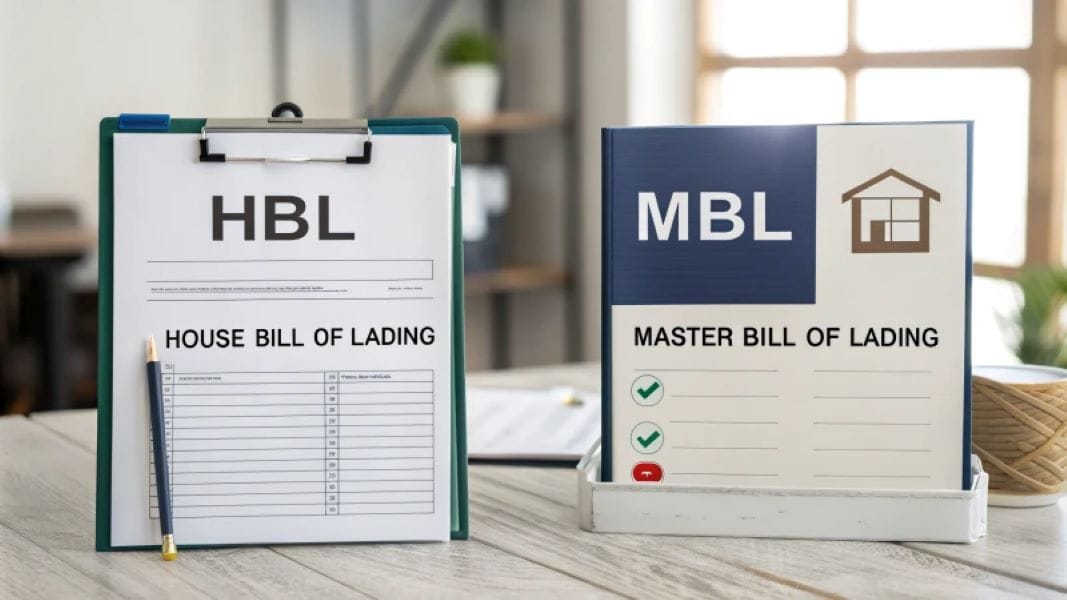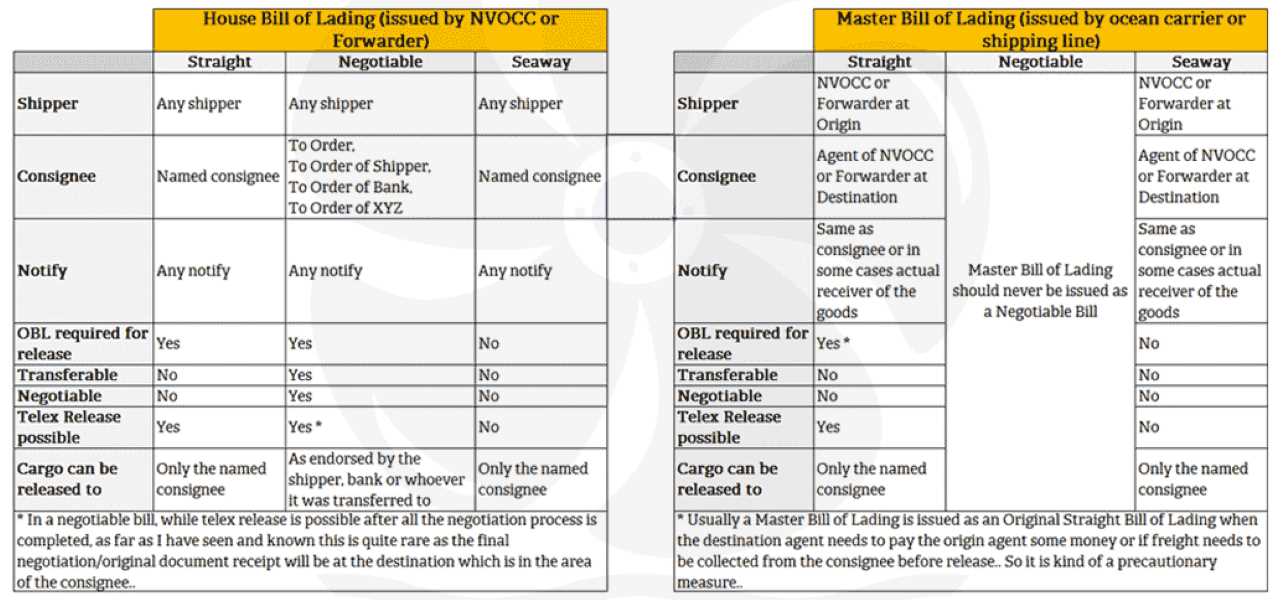In international cargo transportation, the bill of lading (B/L) is a crucial document, which represents the ownership of the goods and the proof of the transportation contract. Bills of lading are usually divided into two types: master bill of lading (MBL) and house bill of lading (HBL). This article will introduce the meaning and difference between the two in detail.
This article may help you: The 11 Common International Trade Terms

Introduction to MBL
MBL, or Master Bill of Lading, is one of the core documents in maritime cargo transportation. It is issued by the shipping company or its agent, and describes in detail the information of the goods, such as the consignor, consignee, quantity of goods, packaging method, and loading and unloading ports. MBL is not only a certificate of the owner of the goods, but also a document that proves the rights, property and liability relationship between all consignors, and has the function of a property right certificate.
Introduction to HBL
HBL, or House Bill of Lading, is a certificate issued by a freight forwarder to the consignor when undertaking cargo transportation business. HBL records in detail the key information such as the name, quantity, place of departure and destination of the goods, and is an indispensable and important document in international trade. It proves that the freight forwarder has accepted the consignor’s entrustment and promised to deliver the goods to the designated destination in accordance with the requirements of the transportation contract.
Applicable situations of MBL and HBL
MBL is applicable to full container shipping (FCL). It is the highest document in the international transportation of goods, carrying important information about the goods and is irreplaceable. For sea transportation, MBL is proof of the transportation contract between the cargo owner and the shipping company, ensuring the cargo owner’s control and rights over the goods.
HBL can be used for both full container shipping and less than container shipping (LCL). In LCL transportation, since the shipping company will not issue a LCL bill of lading, only HBL can be used. In addition, when there are middlemen, the middlemen may keep business secrets by issuing HBL to prevent the end customer from knowing key information such as the source of the goods.
Differences between HBL and MBL
Although HBL and MBL have some similarities, their functions and legal implications are very different:
| Differences | Master Bill of Lading (MBL) | House Bill of Lading (HBL) |
|---|---|---|
| Issuer | Carrier or shipping company | Freight forwarder/NVOCC |
| Purpose | Represents entire shipment | Represents individual shipments |
| Legal Status | Acts as a contract | Acts as a receipt |
| Negotiability | Typically non-negotiable | Can be negotiable |
| Usage | For customs and tracking | For detailed cargo info |
| Ownership | Between exporter and consignee | Between carrier and freight forwarder |

Frequently Asked Questions about MBL and HBL
In international transportation, can HBL and MBL be reused?
Generally speaking, MBL, as a contract between the carrier and the shipper, is unique and cannot be copied. HBL, as an operating document between the parties in the transportation process, can have multiple HBLs corresponding to one MBL, especially in the case of multimodal transport.
Bill of Exchange Fees
When HBL is exchanged for MBL at the destination port, bill of exchange fees may be involved, and the amount is not fixed.
When is HBL needed?
HBL is usually used in the case of multimodal transport, especially when the goods are transported by multiple carriers (such as shipping, air transport, land transport, etc.), and the freight forwarding company will provide HBL for different shippers.
Is it easy to modify HBL and MBL?
The modification of MBL usually requires negotiation with the carrier, and the modification procedure is relatively complicated. The modification of HBL is usually carried out by the freight forwarding company and is relatively easy to handle.
Learn more: The Meaning of POD in International Trade
In international trade, MBL and HBL represent the contracts between the carrier and the cargo owner and between the cargo owner and the freight forwarder respectively. Understanding their differences will help you better manage and control the cargo transportation process.
